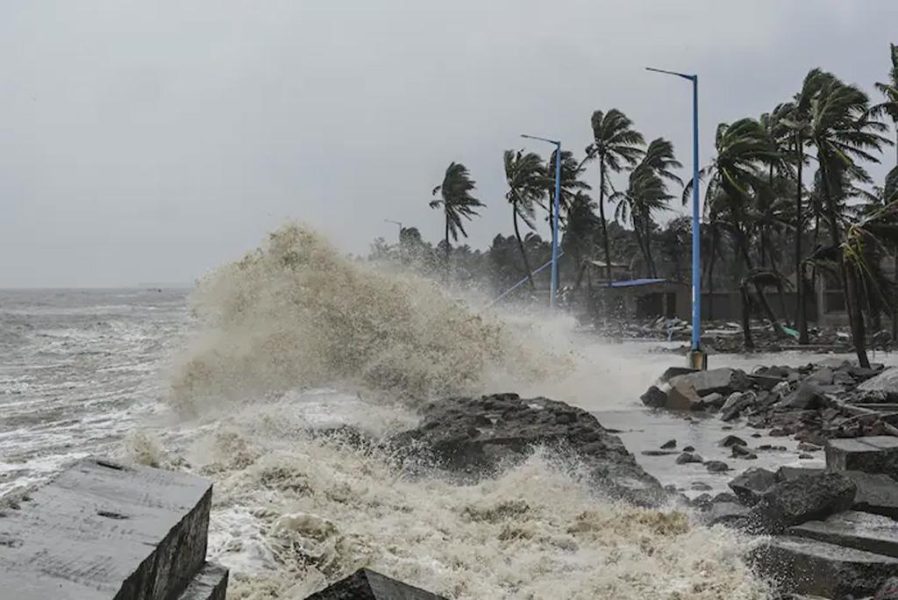
Cyclone Biparjoy: Indian media need not sway to extremes to cover natural disasters

Thanks to the television, Cyclone Biparjoy — the powerful storm that lashed Gujarat last evening — kept us on our toes for the past few days. The coverage was breathlessly extensive.
Though it was related to a disaster that threatened to leave a trail of death and destruction in its wake, the treatment of the story was comical too. Who after all can forget the sight of the television anchor swaying left and right in the safety of her studio, while pretending to be reporting from the ground in Gujarat, as visuals of an old storm in the United States played on the big screen behind her?
Apart from trivialising what could have been a giant tragedy, the coverage underscored how little we understand about cyclones.
Understanding what cyclones entail
Storms packing powerful winds can kill. They have killed tens of thousands in the past in very many countries across the world — from Bangladesh to the Philippines. Even India has not been spared. A particularly nasty gale with wind speed of as much as 225 km an hour killed some 10,000 people in Odisha in 1999.
So, for all practical purposes, the panic that every approaching cyclone triggers is understandable. The blanket coverage also does serve a purpose: though unstated, it heightens panic among the public and prompts them to move away from the path of the cyclone. It makes the job of the government to evacuate people easier. Scared of an impending disaster, the public cooperates in pulling out of the most vulnerable places.
Also read: What Indian media can learn from Fox News’ huge settlement to avoid libel suit
Timely evacuations are a surefire way of minimising the damage. The death toll in the 1999 Odisha cyclone could have been far less had people evacuated. But few then had any living memory of a cyclone scooping up the sea and killing thousands. They, therefore, stayed put wherever they were, preferring to protect their home and cattle instead. The state government, too, had little idea about the damage that a cyclone could do. By the time they realised, it was too late with three sea waves rushing some 20 km inland, washing away everything that came in its way.
Odisha has learnt its lessons since then. Having had to pay with their lives, residents of the state are more aware and actively participate in government-driven evacuation drives as a precautionary measure. The government, too, is better prepared. It has built hundreds of cyclone shelters across the state’s coastline, replaced thatched houses with sturdy brick-and-mortar structures, and has rolled out a very robust disaster management action plan.
Odisha, today, can safely be considered as one of the best prepared Indian states when it comes to combating cyclones. It regularly gets battered by them — Cyclone Phailin in 2013, Cyclone Fani in 2019 and Cyclone Amphan in 2020 — but mortalities have been minimal, mostly not topping more than a 100.
The successful Odisha model provides the media an opportunity to understand cyclones better. Instead of fretting, fuming, and making a mockery of its over-the-top coverage as was the case with the ‘swaying’ anchor, it would do a world of good if it understood what cyclones entail.
When cyclones become catastrophic
For one, cyclones, unlike a powerful earthquake, do not normally kill thousands.
Earthquakes, as in Bhuj of Gujarat, or the more recent one in Turkey, have the potential to kill people in their homes or wherever they are when it topples structures. One can even say that quakes kill people who are better placed in life or are comparatively richer. They own solid houses which can crumble. A poor man living in a makeshift thatched house has better chances of surviving an earthquake since what falls on him may not be as sturdy as brick and mortar.
Also read: ‘Akhand Bharat’ mural widens India’s trust deficit with South Asia neighbours
In comparison, what cyclones bring are powerful winds and rain. Thatched roofs can be blown away and residents can resultantly get drenched. But one does not die. Cyclones also do not bring down concrete buildings and apartments. If there are deaths, they are mostly sporadic in nature — a tree falling here or an electric pole being uprooted coming down on someone there.
Cyclones — as the current one in Gujarat shows — can kill some people. But normally they do not kill many.
But the deadlier exception is when a raging cyclone whips up the sea and brings in waves on to the shores. It is only on such occasions that a cyclone becomes catastrophic. That is what happened in Odisha in 1999. Of the 10,000 people who died, more than 9,000 were killed by the sea waves. The rest were killed by the odd flying debris or toppling trees and poles.
Also read: Arrest of Senthil Balaji and the Constitutional question
Fortunately, not every cyclone triggers sea waves to rush into the shores. Large-scale deaths are, therefore, not a necessary outcome when a storm passes overhead. This is, however, not to say that the cyclones cannot cause havoc. They always pack a very dangerous potential in them and we need to be perennially on the guard.
The media, too, must play a more measured role. In disseminating the news, they need not dramatise and portray a doomsday scenario. Their coverage should remain grounded — and not sway to the extreme.
(The writer is the former Editor-in-Chief of Outlook. He is also the author of The Orissa Tragedy: A Cyclone’s Year of Calamity).
(The Federal seeks to present views and opinions from all sides of the spectrum. The information, ideas or opinions in the articles are of the author and do not necessarily reflect the views of The Federal)

